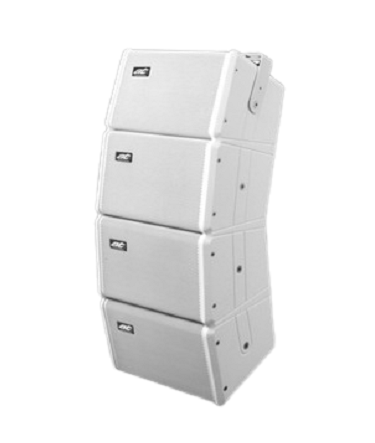Tips for Configuring Line Array Systems
Line array systems are essential in professional audio environments, offering consistent sound coverage, high efficiency, and powerful performance. Proper configuration of these systems is critical to achieving the best sound quality, whether you’re hosting a live concert, setting up for a corporate event, or enhancing audio in a large venue. This guide provides expert tips for configuring line array systems to maximize their potential.

Understanding the Basics of Line Array Systems
Line array systems are a series of loudspeakers designed to project sound evenly across large areas. Unlike traditional speaker setups, they use closely spaced drivers to create a cylindrical sound wave. This design minimizes sound dispersion in unwanted directions, ensuring uniform coverage in both volume and frequency.
Why Line Array Systems Are Popular
- Consistent Coverage: Delivers even sound pressure levels from the front row to the back.
- Scalability: Can be configured for small, medium, or large venues.
- Efficiency: Requires fewer speakers compared to traditional setups for similar performance.
Key Factors in Configuring Line Array Systems
1. Venue Assessment
Before setting up your line array system, conduct a thorough analysis of the venue. Understanding the size, shape, and acoustics of the space will help you determine the number of speakers and their placement.
Considerations for Indoor Venues
- Ceiling height and wall materials impact sound reflections.
- Audience layout affects speaker positioning.
Considerations for Outdoor Venues
- Open spaces require careful attention to throw distance and wind conditions.
- Environmental noise levels influence system calibration.
2. Speaker Placement and Angling
Correct placement and angling of line array systems are critical for achieving optimal sound dispersion. Use software modeling tools to simulate sound coverage and refine the configuration before setup.
Tips for Placement
- Ensure the line array is elevated to project sound evenly.
- Avoid placing speakers too close to reflective surfaces.
Tips for Angling
- Adjust the vertical angle to cover the entire audience area.
- Use splay angles to minimize overlapping sound waves and reduce interference.
Configuring Line Array Systems for Maximum Efficiency
1. Choosing the Right Amplification
Amplifiers play a vital role in the performance of line array systems. Select amplifiers that match the power requirements of your speakers and ensure compatibility with the system’s impedance.
Active vs. Passive Line Array Systems
- Active Systems: Built-in amplifiers simplify setup and reduce the need for external equipment.
- Passive Systems: Require external amplifiers but offer more customization options.
2. Using Digital Signal Processing (DSP)
Digital Signal Processing is essential for fine-tuning the sound quality of line array systems. DSP allows you to adjust parameters like equalization, delay, and crossover frequencies for optimal performance.
Key DSP Functions
- Equalization: Balances frequency response to suit the venue’s acoustics.
- Delay Adjustment: Aligns sound waves from different speakers to eliminate phase issues.
- Crossover Management: Separates frequency bands for more efficient driver performance.
3. Calibrating Sound Levels
Sound calibration ensures that your line array system delivers consistent audio quality across the entire venue. Use sound pressure level (SPL) meters to measure and adjust the system during setup.
Tips for Calibration
- Start with a flat EQ and make adjustments based on the venue’s characteristics.
- Test different listening points to ensure uniform coverage.
Advanced Tips for Line Array Systems Configuration
1. Leveraging Software Tools
Modern software tools are invaluable for designing and configuring line array systems. Programs like EASE Focus and ArrayCalc enable precise modeling of sound coverage and system performance.
Benefits of Using Software
- Reduces setup time by simulating configurations in advance.
- Provides detailed insights into system performance metrics.
2. Managing Subwoofer Placement
Subwoofers play a crucial role in enhancing low-frequency performance in line array systems. Their placement significantly impacts the overall sound quality.
Tips for Subwoofer Placement
- Use a center-cluster configuration for even bass distribution.
- Consider cardioid subwoofer arrays to minimize rearward bass projection.
3. Regular System Maintenance
Proper maintenance extends the lifespan of your line array system and ensures consistent performance.
Maintenance Checklist
- Inspect speaker components for damage or wear.
- Clean connectors and cables to prevent signal loss.
- Update firmware and software regularly for compatibility and new features.
Applications of Line Array Systems
Line array systems are widely used across various industries due to their versatility and performance.
Live Concerts and Festivals
These systems provide powerful, clear sound for large audiences, ensuring everyone enjoys the same quality audio experience.
Corporate Events and Conferences
Line array systems deliver precise sound reproduction, making them ideal for presentations and speeches in large venues.
Houses of Worship
Their ability to cover vast spaces with consistent sound makes them a popular choice for churches, synagogues, and other places of worship.
Sports Arenas and Stadiums
Line array systems are essential for delivering announcements and music to every corner of large outdoor or indoor spaces.
The Future of Line Array Systems
As audio technology continues to evolve, line array systems are expected to incorporate advanced features such as AI-driven sound optimization, enhanced wireless control, and even greater energy efficiency. These innovations will further improve their versatility and performance in various applications.
Properly configuring line array systems is essential for achieving consistent, high-quality sound in any venue. By understanding the basics of these systems, assessing your venue, and following expert tips for placement, calibration, and maintenance, you can maximize their potential.
Whether you’re preparing for a live concert, setting up a corporate event, or enhancing a house of worship, investing time and effort into configuring your line array system will ensure a superior audio experience. With their unmatched versatility and performance, line array systems continue to be the cornerstone of professional audio setups.